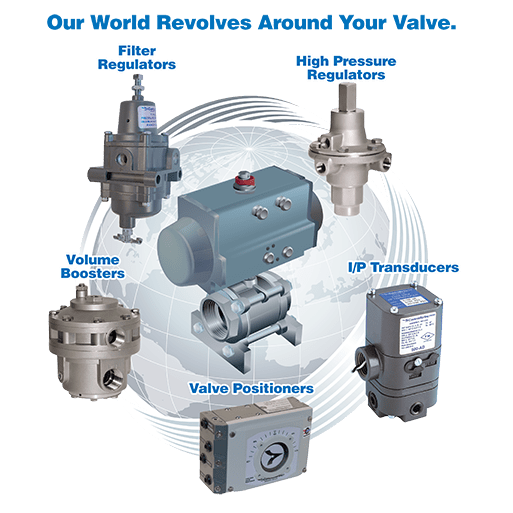The Role of Control Valves in Liquid Flow Management Equipment
The Role of Control Valves in Liquid Flow Management Equipment
Blog Article

Maximize Energy Cost Savings and Convenience With Advanced Structure Automation Controls
In the world of modern-day style and facility administration, the combination of innovative structure automation manages stands as a crucial improvement. By taking advantage of the power of automation, structures can adjust, react, and evolve in ways that were as soon as unimaginable.
Energy Effectiveness Benefits
Power effectiveness advantages can considerably lower power consumption and operational expenses in structures. By implementing energy-efficient practices and technologies, structure proprietors and drivers can attain significant financial savings while likewise adding to ecological sustainability. One of the primary advantages of boosting energy effectiveness in structures is the decrease of energy costs. Energy-efficient systems, such as sophisticated structure automation controls, can maximize using sources like illumination, air conditioning, and heating, causing reduced energy expenditures over time.
Furthermore, enhanced power performance can extend the lifespan of building tools and systems. By running more successfully, HVAC systems, lighting components, and various other building components experience less wear and tear, causing minimized maintenance and replacement costs. Furthermore, energy-efficient buildings often regulate greater property worths and rental rates, offering long-lasting economic benefits to owners.
Additionally, power performance can enhance resident convenience and productivity. Properly managed interior settings with ideal lights and thermal conditions develop a more helpful and positive workspace, causing boosted worker complete satisfaction and efficiency. On the whole, the power efficiency benefits related to sophisticated building automation controls are multifaceted, incorporating cost savings, environmental stewardship, and resident health.
Improved Convenience Control
Enhancing comfort control in structure settings calls for an advanced integration of sophisticated automation systems for ideal resident wellness. By making use of innovative structure automation controls, facilities can customize the indoor setting to meet the particular requirements and choices of owners. control valves.
Boosted comfort control surpasses fundamental temperature adjustments. It includes functions such as tailored setups, occupancy sensing units, and all-natural light application to produce a responsive and dynamic setting. By incorporating these innovative controls, buildings can not only improve convenience yet likewise improve power efficiency by maximizing system procedures based upon real tenancy and usage patterns. Ultimately, focusing on resident comfort with sophisticated automation systems causes an extra satisfying and healthier indoor atmosphere.
Functional Effectiveness Improvements

In addition, the execution of real-time monitoring and analytics devices allows building operators to recognize energy ineffectiveness and operational abnormalities quickly. By continuously keeping track of energy usage patterns and system efficiency metrics, modifications can be made in real-time to maximize energy usage and make sure peak functional effectiveness. control valves. Furthermore, including need action approaches into building automation controls can even more boost operational effectiveness by dynamically readjusting power usage based on grid conditions and prices signals
Indoor Climate Optimization
Efficient interior climate optimization is a fundamental facet of structure automation controls, making certain owners' comfort and wellness while maximizing energy savings. By utilizing innovative sensing units and controls, building automation systems can constantly check and adjust temperature, moisture levels, air top quality, and air flow to create an optimal interior setting. Keeping comfy and regular conditions not only improves occupant complete satisfaction however likewise enhances performance and overall health.
Interior environment optimization also plays a vital function in power effectiveness. By fine-tuning air conditioning, home heating, and air flow systems based upon real-time information and tenancy patterns, building automation controls can considerably decrease power intake - control valves. Applying strategies such as demand-controlled ventilation and thermal zoning can help lessen energy waste while guaranteeing that each area of the building receives the essential conditioning.

Sustainable Setting Development
Structure automation regulates not only maximize indoor climate problems for energy efficiency and owner convenience but also lay the structure for creating a lasting environment with strategic management of systems and resources. By integrating advanced structure automation technologies, such as sensing units, actuators, and smart software application, centers can monitor and readjust energy usage in real-time to reduce waste and reduce their carbon footprint. These systems enable anticipating maintenance, recognizing prospective problems prior to Continue they intensify and enhancing tools efficiency to boost durability and efficiency.
Moreover, sustainable atmosphere creation prolongs past power administration to include water preservation, waste decrease, and indoor air top quality improvement. Building automation controls can control water use, identify leaks, and guarantee proper waste disposal practices, adding to total sustainability initiatives. In addition, by keeping an eye on and controlling air flow and purification systems, these technologies enhance passenger health and productivity while reducing energy usage associated with HVAC procedures.
Verdict
In final thought, progressed structure automation regulates offer substantial benefits in regards to power savings, convenience control, operational performance, interior climate optimization, and developing a lasting setting. By carrying out these controls, buildings can accomplish optimum performance while lowering power intake and improving owner comfort. It is apparent that using sophisticated automation innovation is vital in boosting building performance and producing a more lasting future.
Power efficiency benefits can substantially minimize energy intake and functional expenses in structures. In general, the energy performance benefits associated with sophisticated structure automation controls are complex, including price financial savings, ecological stewardship, and resident well-being.
In addition, integrating demand response techniques into building automation controls can additionally enhance functional effectiveness by dynamically adjusting energy visit homepage use based on grid problems and prices signals.
Building automation manages not only enhance indoor climate problems for energy effectiveness and passenger comfort however likewise lay the structure for producing a lasting environment through critical administration of resources and systems.In conclusion, advanced building automation manages offer significant benefits in terms of power financial savings, convenience control, functional efficiency, indoor climate optimization, and creating a sustainable setting.
Report this page